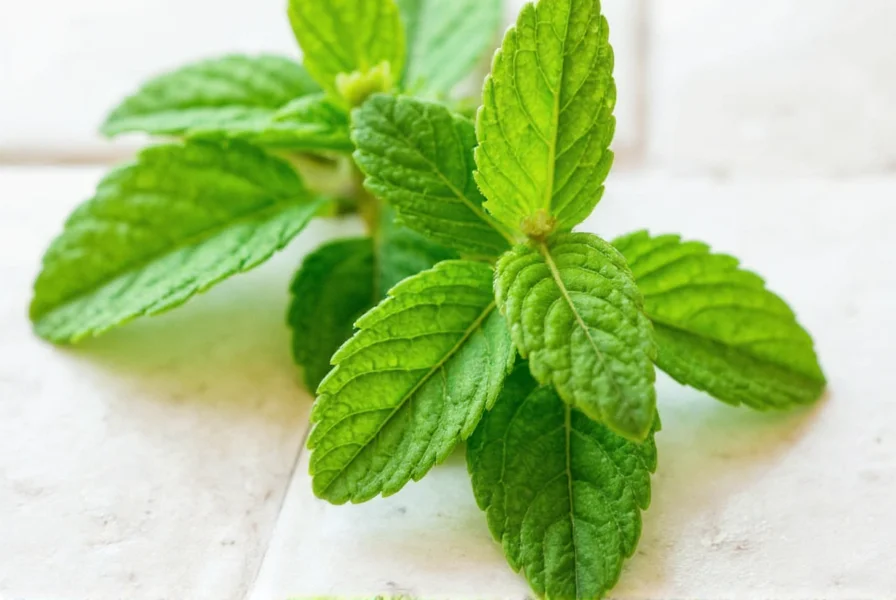Ginger mints represent a unique category of functional confectionery that combines the refreshing quality of mints with the potential health properties of ginger. These small, typically round candies deliver a distinctive spicy-sweet flavor that sets them apart from standard peppermint or spearmint varieties. The active component comes from gingerol, the compound responsible for ginger's characteristic heat and potential therapeutic effects.
Understanding Ginger Mint Composition
Authentic ginger mints contain actual ginger extract or oil rather than just artificial flavoring. The most effective varieties maintain a balance between sugar content and ginger concentration. While traditional mints focus solely on breath freshening, ginger mints serve a dual purpose: providing fresh breath while potentially supporting digestive comfort.
| Component | Traditional Mints | Ginger Mints |
|---|---|---|
| Primary Flavor | Menthol-based | Gingerol-based |
| Physiological Effect | Cooling sensation | Warming sensation |
| Common Use Case | Breath freshening | Digestive support |
| Active Compound | Menthol | Gingerol |
Science-Backed Benefits of Ginger Mints
Research suggests ginger may help with nausea relief, making ginger mints particularly valuable for motion sickness or morning sickness. A systematic review published in Nutrition Journal found ginger effective for nausea management, though the concentration in mints is typically lower than therapeutic doses used in studies. The slow dissolution of mints allows for gradual release of ginger compounds, potentially extending their soothing effects.
For digestive support, ginger mints may help alleviate mild indigestion after meals. The warming sensation triggers mild stimulation of digestive enzymes without the intense heat of raw ginger. This makes them more palatable for those seeking natural remedy for nausea without the strong taste of ginger tea or supplements.

Practical Applications and Limitations
Ginger mints serve as convenient travel companions for those prone to motion sickness. Unlike pills or liquids, they require no water and provide immediate relief as they dissolve. Many travelers keep them in purses or glove compartments for quick access during car trips or flights.
However, consumers should understand the limitations of ginger mints. They contain significantly less ginger than therapeutic doses used in clinical studies for nausea relief. For severe nausea or medical conditions, they shouldn't replace prescribed treatments. The sugar content in most commercial varieties also warrants consideration for frequent users or those monitoring sugar intake.
Homemade Ginger Mint Alternatives
For those seeking natural ginger mint benefits without added sugars, homemade versions offer control over ingredients. A simple recipe involves combining fresh ginger juice with honey and allowing it to harden. These natural remedy for nausea alternatives provide higher ginger concentration but lack the convenience of commercial products.
When evaluating ginger mint benefits for digestion, consider that fresh ginger contains higher concentrations of active compounds. However, the portability and palatability of mints make them a practical option for everyday digestive support when fresh ginger isn't convenient.

Choosing Quality Ginger Mints
Not all ginger mints deliver equal benefits. Look for products listing ginger extract or oil among the first ingredients rather than artificial flavors. Higher quality varieties often specify the ginger concentration. Organic options may provide more consistent ginger compound levels without artificial additives that could diminish potential benefits.
Understanding the difference between ginger mints and regular mints helps set appropriate expectations. While regular mints primarily freshen breath through menthol, ginger mints offer a functional benefit through their active ginger components, making them valuable for specific situations beyond basic oral hygiene.
Frequently Asked Questions
Do ginger mints actually help with nausea?
Ginger mints may provide mild relief for nausea due to the ginger compounds they contain. While the concentration is lower than therapeutic doses used in studies, the slow release as the mint dissolves can offer temporary relief for mild nausea, particularly motion sickness. They work best as a preventive measure rather than for severe nausea episodes.
How do ginger mints differ from regular mints?
Ginger mints contain ginger extract or oil as the primary flavoring agent, creating a warming sensation rather than the cooling effect of menthol in regular mints. They serve a dual purpose: freshening breath while potentially supporting digestive comfort. The active compound in ginger mints is gingerol, whereas traditional mints rely on menthol for their characteristic effect.
Can ginger mints help with digestion after meals?
Yes, ginger mints may aid mild post-meal digestion. The ginger compounds can stimulate digestive enzymes and help move food through the digestive tract. Many people find them particularly helpful after rich or heavy meals. However, they won't address serious digestive issues and shouldn't replace medical treatment for chronic conditions.
Are there any side effects of consuming ginger mints regularly?
Most people tolerate ginger mints well, but excessive consumption could cause heartburn or mouth irritation due to the ginger's warming properties. The sugar content in many commercial varieties also warrants consideration for frequent users. Those on blood thinners or with gallstone issues should consult a healthcare provider before regular consumption, as ginger can interact with certain medications.











 浙公网安备
33010002000092号
浙公网安备
33010002000092号 浙B2-20120091-4
浙B2-20120091-4